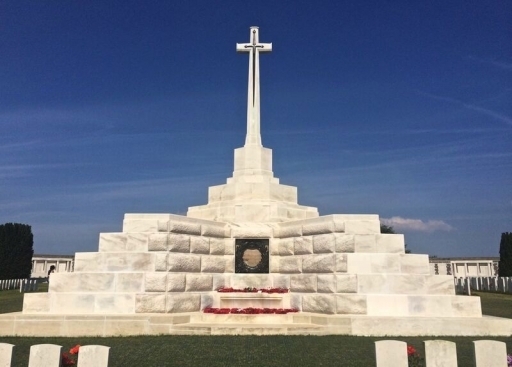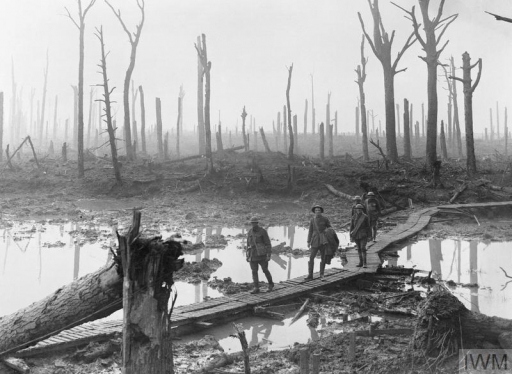Canadian troops completed the capture of Passchendaele on 10 November 1917, ending the Allied offensive in Flanders known also as the Third Battle of Ypres.
What had been conceived in the summer as an ambitious plan to break out of the Ypres salient towards the Belgian coast ended in an advance of just five miles (eight kilometres).
British, Irish, Australian, Canadian, New Zealand and French troops were all drawn into a struggle that soon got into difficulties against well-prepared German defences. The notorious Flanders mud was also a fearsome obstacle.
But apart from the fall of Passchendaele itself, there were some notable Allied successes in the later stages of a campaign that had opened on July 31.
A more limited, ‘step-by-step’, approach – employed by General Sir Herbert Plumer after he took over operational command – resulted in the victories of the Menin Road, Polygon Wood and Broodseinde in late September/early October.
Thereafter Field Marshal Sir Douglas Haig, the Commander-in-Chief, is widely criticised for forcing the advance towards the village of Passchendaele, thereby failing to allow for adequate planning.
 Tyne Cot Cemetery, cared for by the Commonwealth War Graves Commission, last resting place for thousands of soldiers killed on the battlefields of Passchendaele and Langemarck (Photo: Centenary News)
Tyne Cot Cemetery, cared for by the Commonwealth War Graves Commission, last resting place for thousands of soldiers killed on the battlefields of Passchendaele and Langemarck (Photo: Centenary News)
By the autumn, Australian and New Zealand forces had to be called in as replacements for earlier British losses.
But as bad weather set in again during October, the New Zealanders suffered their ‘darkest day’, losing 843 dead in the attack on Bellevue Spur.
There are frequent references to the drenching rain and bitter cold in the reporting of the war correspondent, Philip Gibbs.
His dispatch on the impending fall of Passchendaele, carried by Britain’s Daily Telegraph on 7 November 1917, noted: “The weather fought again and again for the enemy on the days of our attacks, and the horrors of the mud and bog belongs to the grimmest remembrances of every soldier who has fought in Flanders.”
Canadian troops, commanded by General Sir Arthur Currie, relieved the Australians and New Zealanders, fighting their way into the ruins of Passchendaele village on November 6 and consolidating their hold on the ridge four days later.
Casualties
The Third Battle of Ypres/Passchendaele resulted in more than 500,000 casualties (troops killed, missing or wounded) on all sides.
It has left us with some of the most enduring images of the Great War, of exhausted soldiers sinking deep into the mud, and shell-blasted landscapes with all signs of normal life obliterated.
And historians invevitably differ over this most controversial of battles.
‘The point of Passchendaele defies explanation’, writes John Keegan in his book, The First World War, condemning it as an example of Sir Douglas Haig’s ‘profligacy with men’.
But Nick Lloyd – in his 2017 work Passchendaele, A New History, argues it is possible the British could have won a major victory in the late summer and autumn: ‘Perhaps the real tragedy was they did not always fight to their strengths’, he notes.
In 2017, Passchendaele has been the focus for major British, Australian and New Zealand centenary commemorations in Belgium – culminating in Canadian ceremonies today (November 10) marking the end of the battle.
Compiled by CN Editor
Images courtesy of Imperial War Museums © IWM E(AUS) 1220 (Chateau Wood); Centenary News (Tyne Cot Cemetery)
